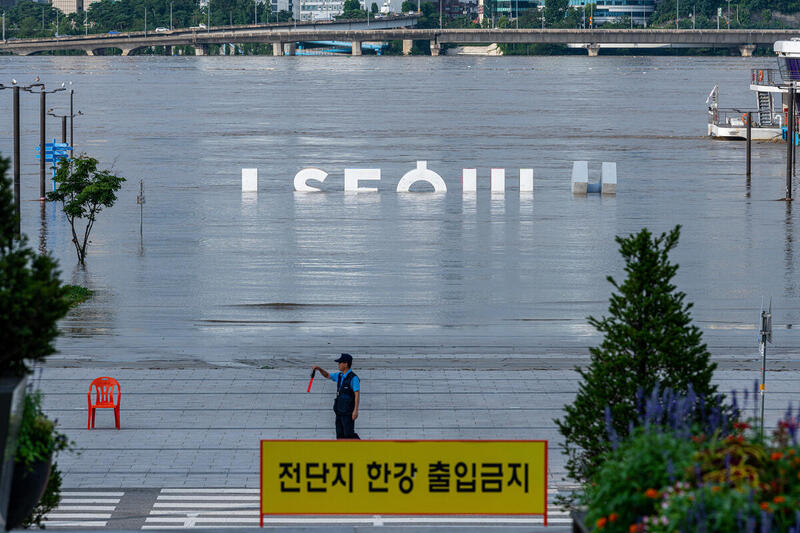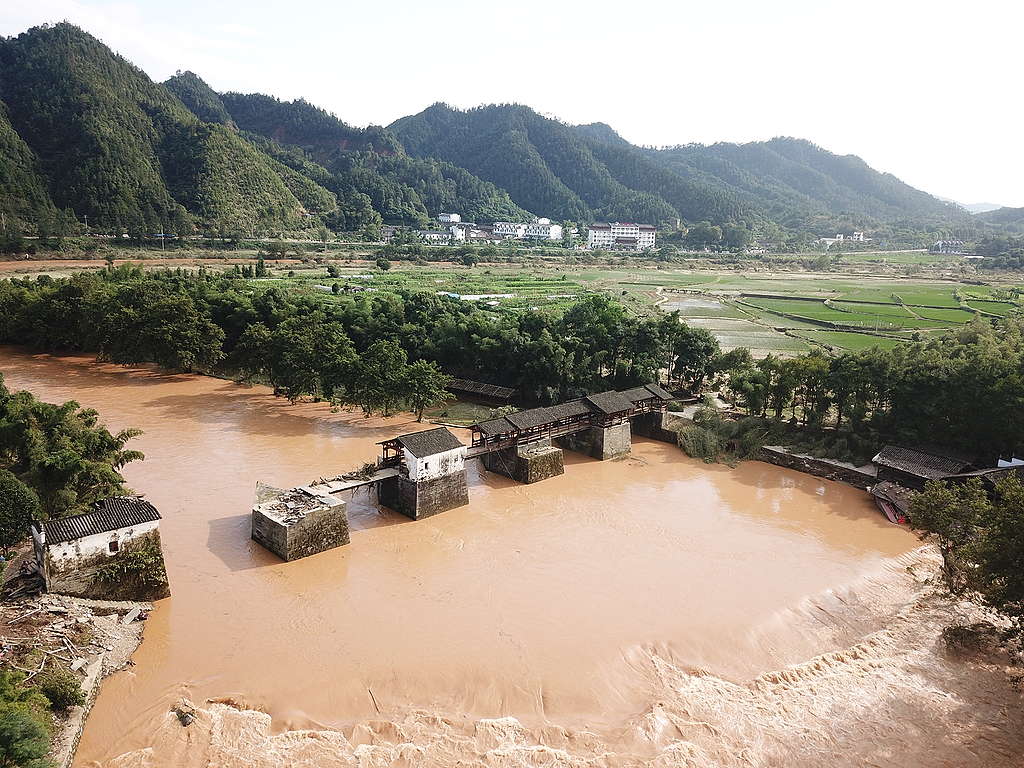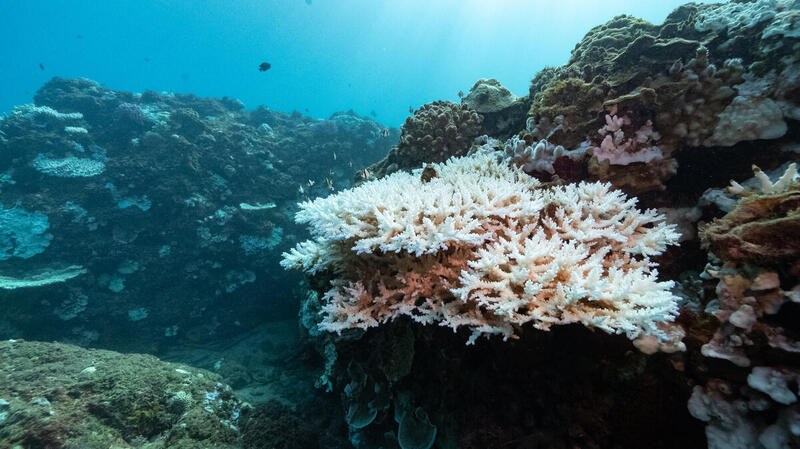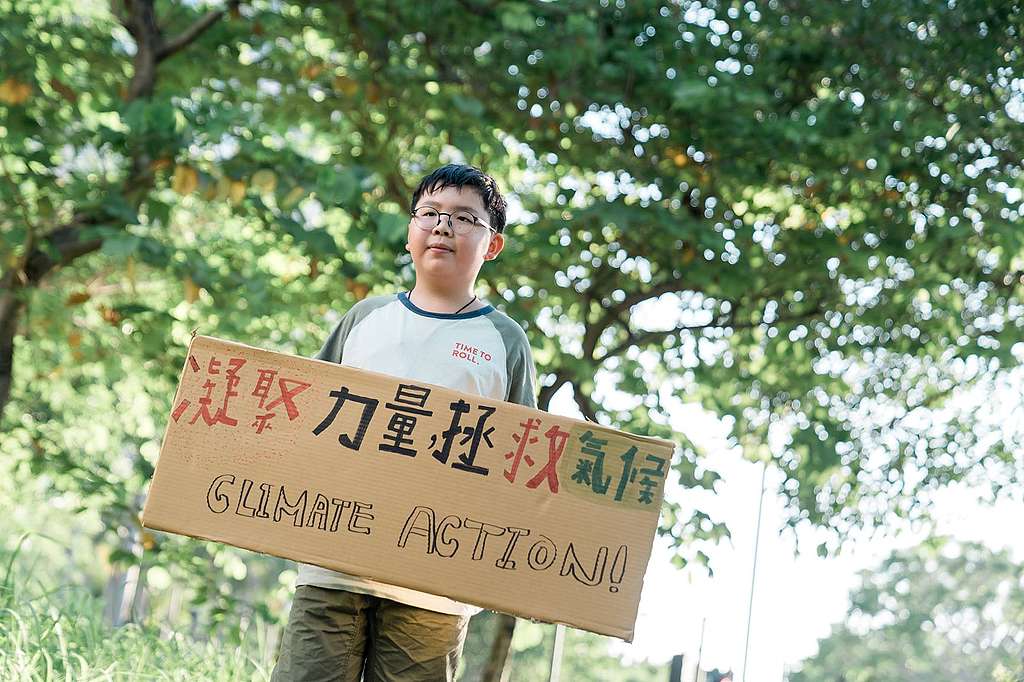In 2020, the whole world struggled with the enormous challenges and tragedies of the pandemic. New vaccines hold the promise of recovery from the Covid emergency, but the climate emergency continues to threaten our future and the future of the next generations. From floods in China, Korea, and Japan to heat waves across the region in summer, we urgently need the same spirit of ambition and determination that is going into battling the virus to be channeled into combating the climate crisis.
The Greenpeace East Asia Research Unit compiled extreme weather events across the region that occured this year. Here they are:
1. The longest monsoon in recorded history in Korea
Summer 2020 in Korea saw heavy flooding with the longest monsoon in recorded history that experts have linked to climate change, lasting from late June to August[1].

2. Record-breaking floods in China
China also experienced heavy flooding. In July, rainfall in the Yangtze River basin reached a record breaking 298 mm (64% above average)[2]. This extreme weather affected more than 38 million people and caused direct losses totalling close to 17 billion USD[3].

3. More frequent & stronger typhoons in some areas
The number of typhoons striking Tokyo has increased 50% over the past 20 years[4]. The storms are also growing more powerful.
Weather in East Asia is heavily influenced by typhoons. Scientists have pointed out that the pattern of storms has been changing in recent years largely driven by rising sea surface temperatures. The typhoons have also been moving north so that Japan and northern China are now getting hit more often[5].
4. Worst coral bleaching in 22 years
The high intensity heat stress and rising water temperature of the Pacific Ocean have been causing massive and severe coral bleaching around islands[6]. In August of this year the US National Oceanic and Atmospheric Administration warned that “severe bleaching and significant mortality was likely”.

5. Hottest on record
Last summer was one of the hottest on record across East Asia. Temperatures peaked early in Beijing[7], while Korea was also sweltering with average maximum and minimum temperatures over 1℃ higher than the average[8]. Hong Kong experienced 43 very hot days, more than 32 days above the average annual number[9].
Now is the time for action
These abnormal weather patterns are not just an inconvenience; they have a serious impact on our lives through health impacts, crop failures, displaced populations and financial damage. They mean we are living in a climate crisis, and NOW is the time to act. We are seeing the world beginning to wake up.
Greenpeace celebrated in 2020 when three big countries in the region committed to 100% carbon neutrality by 2050 (Japan and Korea) and 2060 (China). That’s a huge step forward for the planet. But what we need now is for these three countries to be real leaders and hammer out long-term, concrete plans for how they will meet the targets, including clear timelines for a transition to 100% renewable energy.
Greenpeace was one of the first global environmental organizations to work on climate change, and we’re one of the most active campaigning organizations today. While we keep working for the environment, we are heartened to know that you are by our side. As we enter 2021, we feel confident that not only will the world overcome the covid crisis but we will also overcome the climate crisis.

References:
[1] http://www.koreaherald.com/view.php?ud=20200811000727
[2] http://www.china.com.cn/zhibo/content_76342116.htm
[3] http://www.gov.cn/xinwen/2020-08/04/content_5532414.htm
[4] https://www.mri-jma.go.jp/Topics/R02/020825/press_release020825.pdf, Meteorological Research Institute of the Japan Meteorological Agency survey
[5] Zhao, Weijie, Extreme weather and climate events in China under changing climate, National Science Review, Volume 7, Issue 5, May 2020, Pages 938–943, https://doi.org/10.1093/nsr/nwaa069
[6] https://focustaiwan.tw/society/202009100021
[7] https://www.greenpeace.org.cn/beijing-heatwave-covid19/
[8] KMA, 2020, Specificities of climate in June 2020: highest temperature in history due to early heat wave. http://www.climate.go.kr/home/bbs/view.php?code=58&bname=newsreport&vcode=6420&cpage=1&vNum=616&skind=&sword=&category1=&category2=
[9] https://www.hko.gov.hk/en/wxinfo/pastwx/mws2020/mws202008.htm


